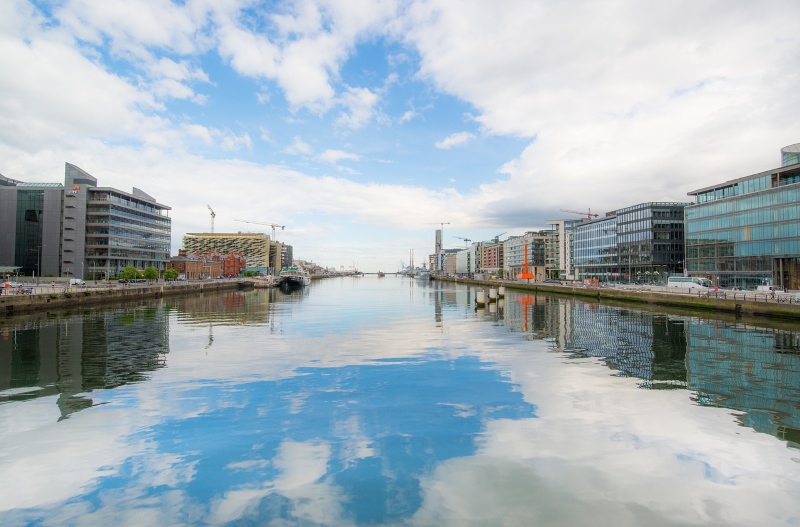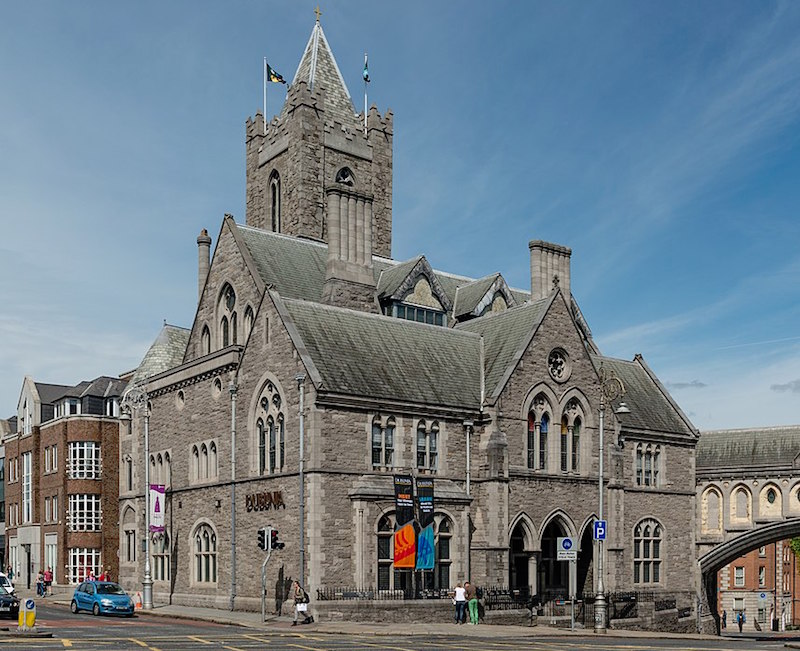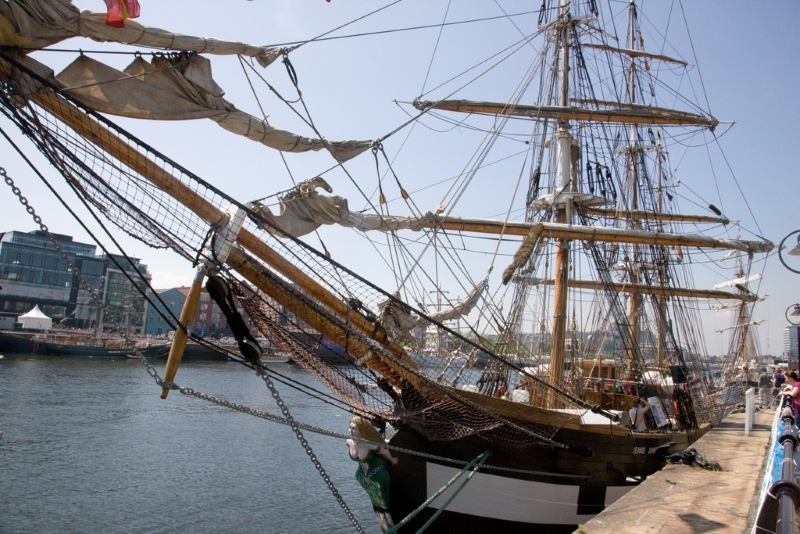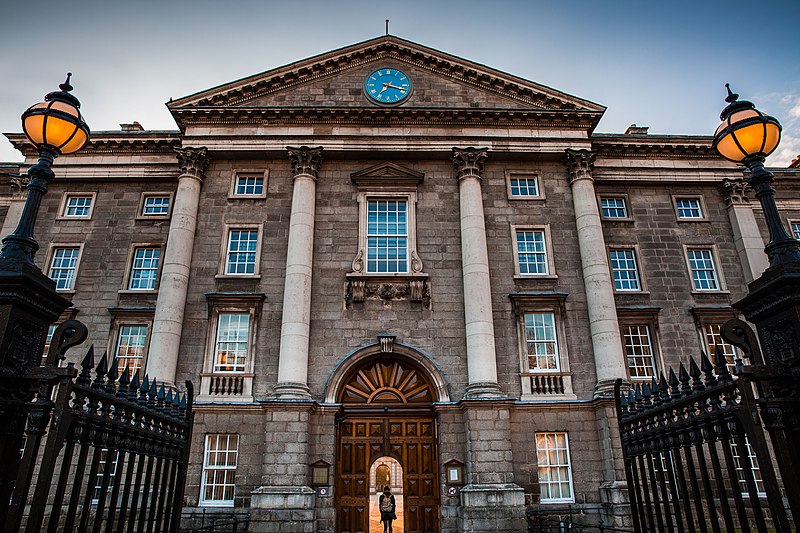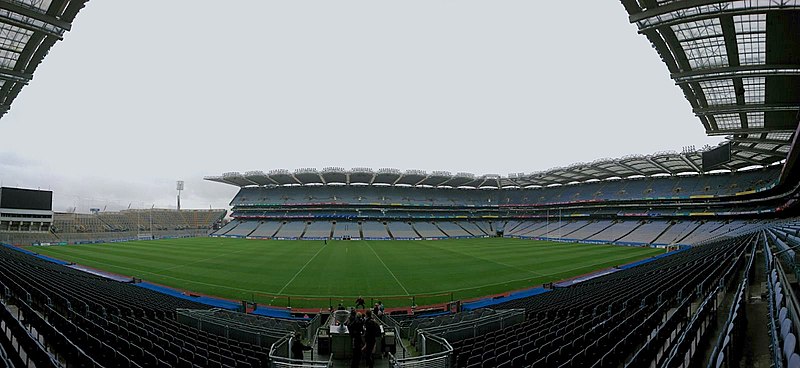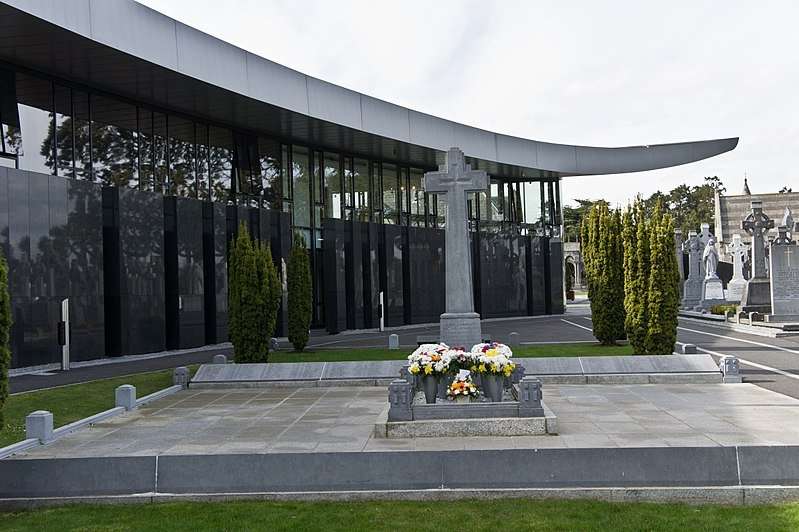Looking for the top Dublin landmarks to visit? We’ve got you covered! Dublin, Ireland’s dynamic capital, has always been a mesmerizing city, combining its rich past with modern flair.
As you walk along its cobblestone streets, you’ll come across a multitude of cultural, historical, and architectural marvels that will amaze tourists. We’ll take you on an enjoyable tour of Dublin’s top landmarks, from historic castles to lively markets and all in between.
Things you'll find in this article
- 19 Best Dublin Landmarks
- 1. River Liffey
- 2. City Hall
- 3. Merrion Square
- 4. Ha’Penny Bridge
- 5. Temple Bar
- 6. Dublin Castle
- 7. O’Connell Monument
- 8. Dublinia
- 9. Jeanie Johnston Tall Ship
- 10. Trinity College
- 11. General Post Office
- 12. National Museum of Ireland
- 13. National Gallery of Ireland
- 14. National Botanic Gardens
- 15. Croke Park
- 16. St Patrick’s Cathedral
- 17. Guinness Storehouse
- 18. Glasnevin Cemetery
- 19. Phoenix Park
19 Best Dublin Landmarks
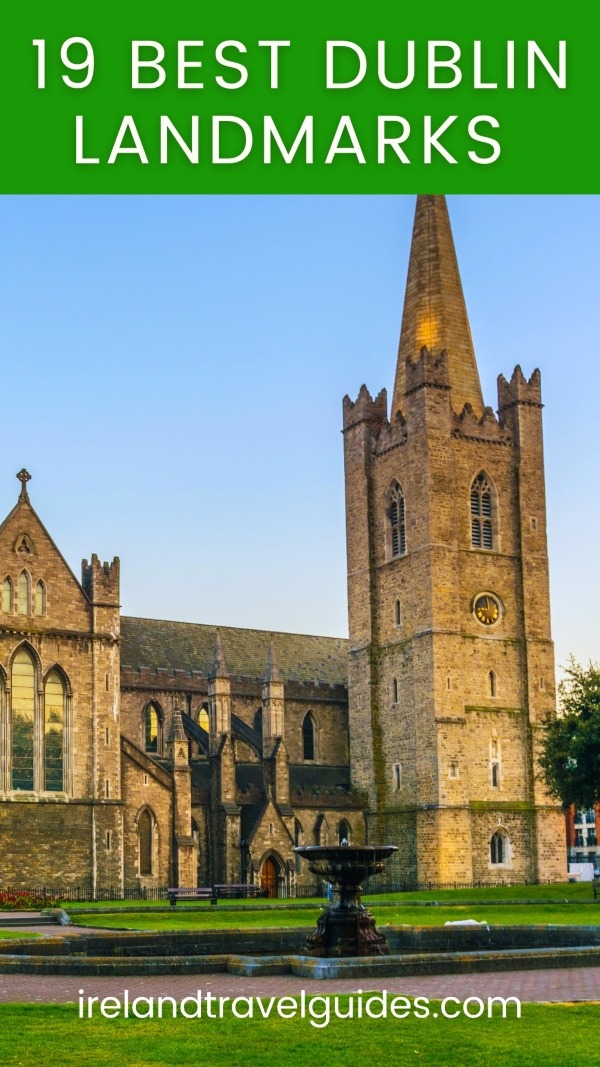
Related Read:
- 10 Free Things To Do In Dublin, Ireland (For 2023)
- 10 Things To Do in Dublin With Kids (For 2023)
- 30 Best Things To Do In Dublin, Ireland (For 2023)
- 12 Best Bookstores in Dublin
- Top 10 Gardens and Parks in Dublin To Visit
1. River Liffey
Location: Eastern Ireland
The River Liffey, which flows through the heart of town and divides Dublin in two, is the canal around which the city initially grew and expanded, and it continues at the core of city life.
The river travels from the Wicklow Mountains through Kildare, Wicklow, and Dublin before draining into the Irish Sea. Getting out on the river is the greatest way to explore the River Liffey. Pick from relaxing river cruises, motorized vehicle adventures, and kayaking trips.
For those who are new to Dublin, seeing the River Liffey and its close surroundings is a must. If you intend to swim, keep in mind that the Liffey’s waters are frigid all year.
2. City Hall
Location: Dame St, Dublin, Ireland
This stately Georgian structure was created by famous architect Thomas Cooley in the late 18th century as Dublin’s Royal Exchange.
It now accommodates Dublin City Council sessions as well as a multimedia display in the basement that chronicles the evolution of the Irish city through the ages.
Because of its association with the Hellfire Club, an infamous 18th-century secret club connected with Satan worship and sex that is said to have been formed in the location where Dublin City Hall now sits, it is occasionally included on haunted history tours of the city.
Related Read:
- 11 Must-See Castles In Dublin, Ireland
- Dublin Tours: The 10 Most Unusual Tours In The City
- 3 Days in Dublin: Itinerary With Maps and Tips (For 2023)
- 10 Best Day Trips From Dublin (Cost, Transport and Tips For 2023)
3. Merrion Square
Location: Dublin, Ireland
Merrion Square was built in 1762 and is a magnificent example of both Dublin’s most formal architecture and the city’s aristocratic background. The square was created due to its closeness to the Duke of Leinster’s residence.
Merrion Square is largely a public green space in Dublin’s city center. The little park is open during the day and features broad open lawns and neat flower beds.
The groomed square is an attractive spot for a brief walk in the center of Dublin to enjoy a green break. On bright days, the area is particularly popular with students from nearby Trinity College, who come to relax on the lawns.
4. Ha’Penny Bridge

Ha’penny Bridge, Image by Christine Rogador
Location: Bachelors Walk, North City, Dublin, Ireland
Before the construction of the Ha’penny Bridge, anybody seeking to cross the Liffey needed to get there by boat or take on the road with horse-drawn vehicles.
Seven distinct ferries would ferry passengers across the river at various places along the shore, all controlled by a city Alderman called William Walsh. The boats eventually deteriorated into such condition that Walsh was forced to rebuild them altogether or build a bridge.
A halfpenny doesn’t get you very far these days, but even that modest toll has long been gone, thus visiting the Ha’penny Bridge is now free. Visit throughout the day or at night while touring the city or on your journey to a pub meal in Temple Bar.
Read More: Ha’penny Bridge: The Historical Bridge Of Dublin
5. Temple Bar
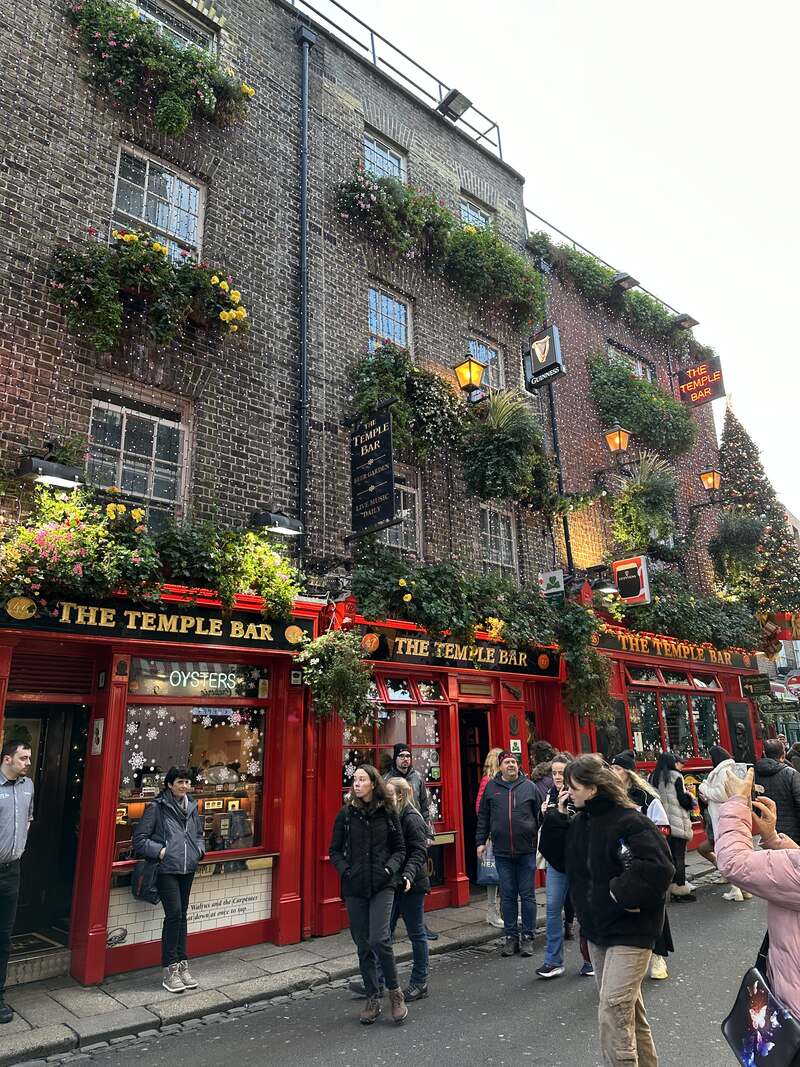
Temple Bar, Image by Christine Rogador
Location: South Bank of the River Liffey
Since the mid-1990s, this cobblestone enclave along the southern banks of the Liffey has drawn travelers searching for traditional pubs, live music, and a good time. But Temple Bar is more than just its nightlife. Museums, small stores, and art installations may be found among the traditional sessions and performances.
Meeting House Square has been taken up by the Temple Bar Food Market, which sells everything from bottles of goat yogurt to massive wheels of farmhouse cheese.
There’s a nice selection of vendors, such as rotisserie booths selling slow-roasted free-range pig for sandwiches and food trucks serving Dehli-style vegetarian curries.
Read More: Temple Bar; The Best Pub In Ireland
6. Dublin Castle
Location: Dame St, Dublin 2, Ireland
Since King John of England constructed Dublin Castle, it has fulfilled several purposes. Formerly a defensive fortress against Norman invasions and the capital of the English government, it has subsequently housed the Royal Mint as well as police headquarters.
Nowadays, the castle grounds are popular with tourists and serve as a setting for Irish government meetings and festivities.
While the outside of Dublin Castle is normally available to the public, only the State Apartments can be viewed on the inside. This is only available through a guided tour.
Read More: Dublin Castle: The Historic Heart Of Dublin
7. O’Connell Monument
Location: O’Connell Street Lower, North City, Dublin 1, D01 TX31, Ireland
The massive statue stands at the bottom of O’Connell Street, immediately facing Dublin’s south side. The O’Connell memorial was always in good hands, having been designed by one of the best sculptors of his day.
The statue is 40 feet high and made up of three bronze parts separated by a massive granite pedestal, with O’Connell staring across the Liffey towards Dublin’s southside.
The granite stone of the foundation was placed in 1864, and Foley remained involved with the project until he passed away in 1874. Maybe a closer look at the unique number of sculptures in the monument’s central part explains why it took so long to finish.
Related Read:
- 8 Best Brunch Restaurants In Dublin
- 13 Best Food Markets In Dublin
- 10 Good and Cheap Restaurants in Dublin
- 20 Best Pubs In Dublin, Ireland
8. Dublinia
Location: St Michaels Hill Christ Church, Dublin 8, Ireland
Dublinia serves as an educational museum devoted to Dublin’s Viking past, situated on Fishamble Street in the old Christchurch neighborhood. The Viking Museum does an excellent job of depicting Viking life many thousands of years in the past.
This museum tells how Vikings arrived in Dublin, and what the Viking colony looked like, and includes several interactive displays that make learning about Dublin’s Viking history enjoyable.
9. Jeanie Johnston Tall Ship
Location: Custom House Quay, North Dock, Ireland
The Jeanie Johnston vessel of now is an exact copy of Tall Ship that is similar to the real thing in every aspect. Entrance to the Jeanie Johnston Tall Ship Plus Museum is €14 for grownups and €8.50 for kids, with the group and senior discounts available.
The 45-minute tour is led by a trained guide who will educate you about the people who were forced to flee Ireland throughout the Great Famine. You’ll hear about the difficulties they endured and what awaited them when they arrived in America.
Related Read:
- Getting Around Dublin: Public Transportation Options
- Dublin Airport To City: Airport Transfer Options For First-Time Visitors
- Dublin To Limerick: How To Travel To Limerick From Dublin
- Dublin To Belfast Transport Options
- Dublin To Galway Transport Options
- 14 Best Hiking Spots Near Dublin
10. Trinity College
Location: College Green, Dublin 2, Ireland
Despite its extensive history, Trinity College was not the first university in Dublin. The Medieval University of Dublin, established by the Pope in 1320, was ultimately the city’s first effort at creating a university, and while it endured a couple of hundred years, it was stopped by Henry VIII’s Reformation.
The central location of Trinity College makes it ideal for quick and convenient visits. It is located immediately south of the Liffey. Trinity College is not just Ireland’s highest-ranked institution; it is also one of the best in the world.
Read More: Interesting Facts About Trinity College Dublin
11. General Post Office
Location: O’Connell Street Lower, North City, Dublin 1, D01 F5P2, Ireland
In the early 17th century, after years of wandering from facility to building within the city, Dublin’s primary post office acquired a home on O’Connell Street. In 1818, the GPO reopened its doors in its stunning new Georgian structure on what was then referred to as Sackville Street.
The GPO in Dublin is still an operating post office, so you may wander in and examine portions of the building’s interior Monday to Saturday. The workplace may get rather crowded, and many of the artworks that originally hung in the corridors have been relocated.
Related Read:
- Dublin Travel Guide: Best Places To Stay, Eat And See (For 2023)
- Is Dublin Safe? What You Need To Know (2023)
- Is Dublin Expensive? What You Need To Know (2023)
- Renting In Dublin – Guide For Newcomers
- Living In Dublin: The Ultimate Guide For Expats
- Where To Stay in Dublin, Ireland
- 12 Best Hotels In Dublin With Pool
12. National Museum of Ireland
Location: Merrion St Upper, Dublin 2, D02 F627, Ireland
The ground level of the Natural History Museum, often known as “the Dead Zoo,” offers a comprehensive collection of Irish fauna, ranging from the bones of the extinct enormous Irish deer to the Norman rabbits as well.
The remaining levels are devoted to worldwide flora and fauna, hopping across continents rather than focusing on native Irish nature. Elephants and a polar bear were photographed by Irish adventurer Leopold McClintock.
The ghostly pallor of the fish and other creatures preserved in alcohol lends the museum a carnival air.
13. National Gallery of Ireland
Location: Merrion Square W, Dublin 2, D02 K303, Ireland
The National Gallery of Ireland, established in 1864, houses artwork from the 13th through the 21st centuries. The gallery’s extensive inventory of Irish art includes paintings by Jack B. Yeats, as well as works by European painters.
Guests may visit the museum’s permanent collection on their own or with the assistance of a tour guide. Temporary shows at the museum have previously concentrated on the works of German expressionists and Irish-American artists.
14. National Botanic Gardens
Location: Glasnevin, Dublin 9, D09 VY63, Ireland
The National Botanic Gardens, situated just minutes from the city, are free to access and a lovely area to wander. The gardens’ tale began at the end of the 18th century, and they continue to fascinate locals and tourists alike some 200 years later.
The National Botanic Gardens, unlike many similar sites in other capital cities across the world, has no admission price. If nothing else, it’s an excellent choice for a low-cost Dublin vacation.
The windy environment of Ireland creates several highly unusual plant types, which are on show here.
15. Croke Park
Location: Jones’ Rd, Drumcondra, Dublin 3, Ireland
Croke Park is accessible by foot from the city center and can be reached in under 30 minutes. Alternatively, you may take a variety of buses. Since the 1880s, the property around Croke Park had been utilized for athletic events and was referred to as the Jones’ Road sports ground.
When people speak about the ‘Croke Park tour,’ they typically mean the GAA Museum, which depicts how the GAA has contributed to Ireland’s cultural, social, and sports past.
16. St Patrick’s Cathedral
Location: St Patrick’s Close, Dublin, D08 H6X3, Ireland
Although the church was established in 1191, the building of the existing cathedral did not commence until approximately 1220 and lasted for over 40 years. St Patrick’s was competing for dominance with the adjacent Christ Church Cathedral, which was now beginning to resemble the edifice we see today.
St Patrick’s beautiful grounds, which cover a substantial area are a great destination for a walk and a coffee on a warm day, and the delightful small Cafe in St Patrick’s Park serves as one of the most distinctive spots for coffee in Dublin.
17. Guinness Storehouse
Location: St. James’s Gate, Dublin 8, D08 VF8H, Ireland
Within ten years, the brewer began exporting tiny amounts of his stout, and consumer interest in Guinness skyrocketed from there.
The Guinness dynasty continued to develop the brewery as exports increased; they ultimately managed to acquire 64 acres of property in Dublin City, where they constructed offices, staff residences, and everything needed for beer production, such as vats and grain silos.
A massive waterfall as well as the Arthur Guinness Gallery may be found here. The museum looks out onto an atrium shaped like a pint of Guinness. That could fit 14 million pints of beer if it were an actual glass.
Read More: Guinness Storehouse: All You Need To Know
18. Glasnevin Cemetery
Location: Finglas Rd, Glasnevin, Dublin, D11 XA32, Ireland
This museum tells the story of Dublin’s Glasnevin Cemetery, which began in 1832 to function as a multi-faith burial ground.
Exhibits honor many prominent Irish personalities buried here and illustrate the history of burial traditions, religious ideas about the afterlife, and even cases of body snatching.
Glasnevin’s story would reach over the Atlantic if it were not nearly 200 years old. From political conflict to inspired poetry, Irish history’s giants have some serious stories to tell.
19. Phoenix Park
Location: Dublin 8, Ireland
Hugh Tyrrel handed the Knights Hospitaller property, such as what is now Phoenix Park, following Norman’s capture of Dublin in the 12th century.
Phoenix Park is host to a few of Dublin’s greatest and most convenient treks, most of which are suited for both young and old. Phoenix Park Bikes is located inside the main entrance on Parkgate Street and provides bikes for all ages to enjoy the park’s extensive network of 14 kilometers of cycling routes.
Deer have inhabited the area since they were introduced for hunting in the 17th century. They are frequently observed around the Papal Cross. Dogs should be maintained under control as well.
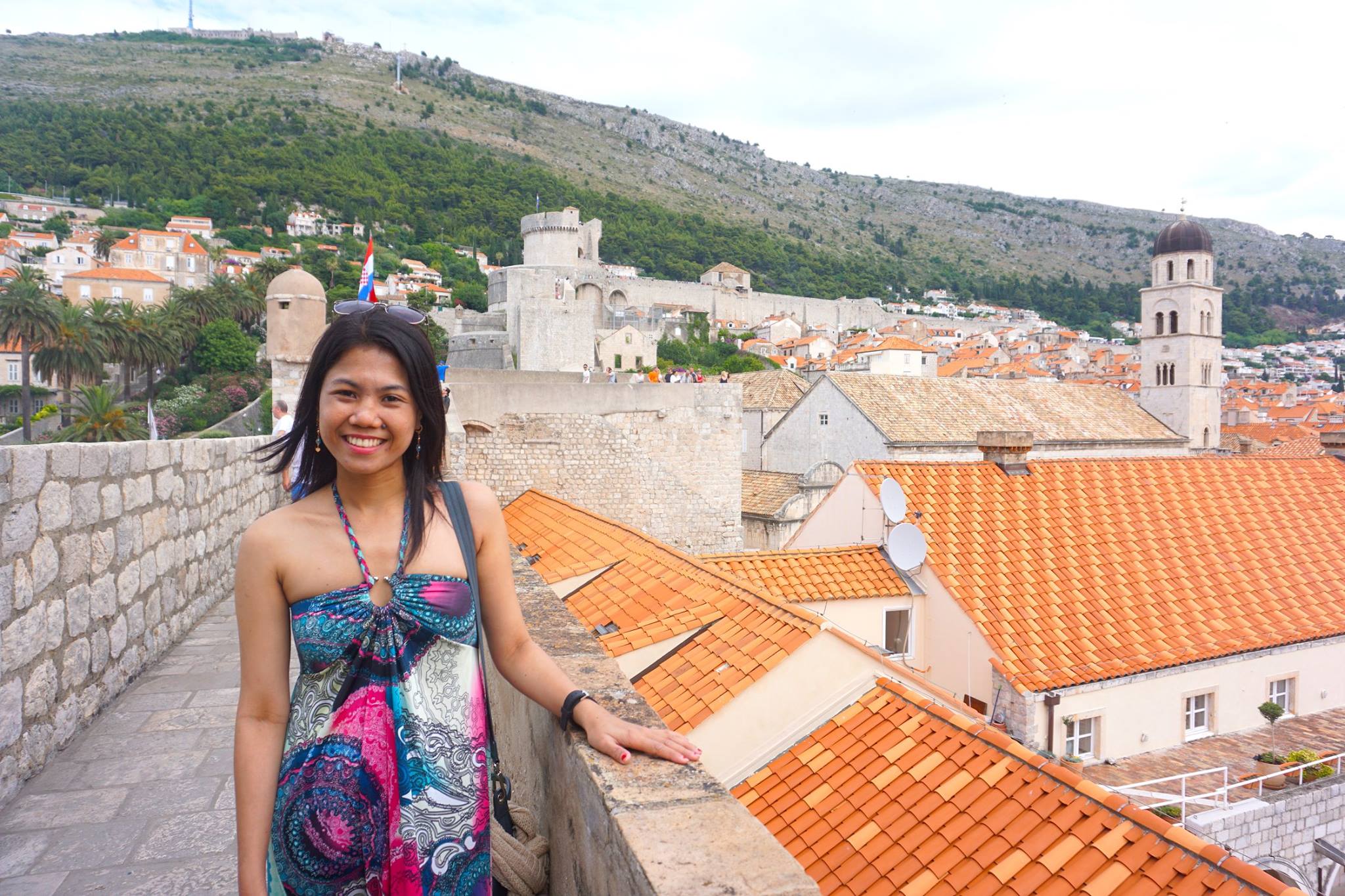
Hi, I’m Christine – a full-time traveler and career woman. Although I’m from the Philippines, my location independent career took me to over 60 countries for the past 12 years. I also lived in 4 continents – from the Caribbean, South East Asia, Africa and now in Europe. But despite living in several countries, my love for Ireland remains the same. A country that had been a part of my life since I was 14 because of my love for Irish music and bands. Ireland Travel Guides was born because of this passion and hopefully, in some little ways, this website will be able to help you on your next trip to Ireland.
